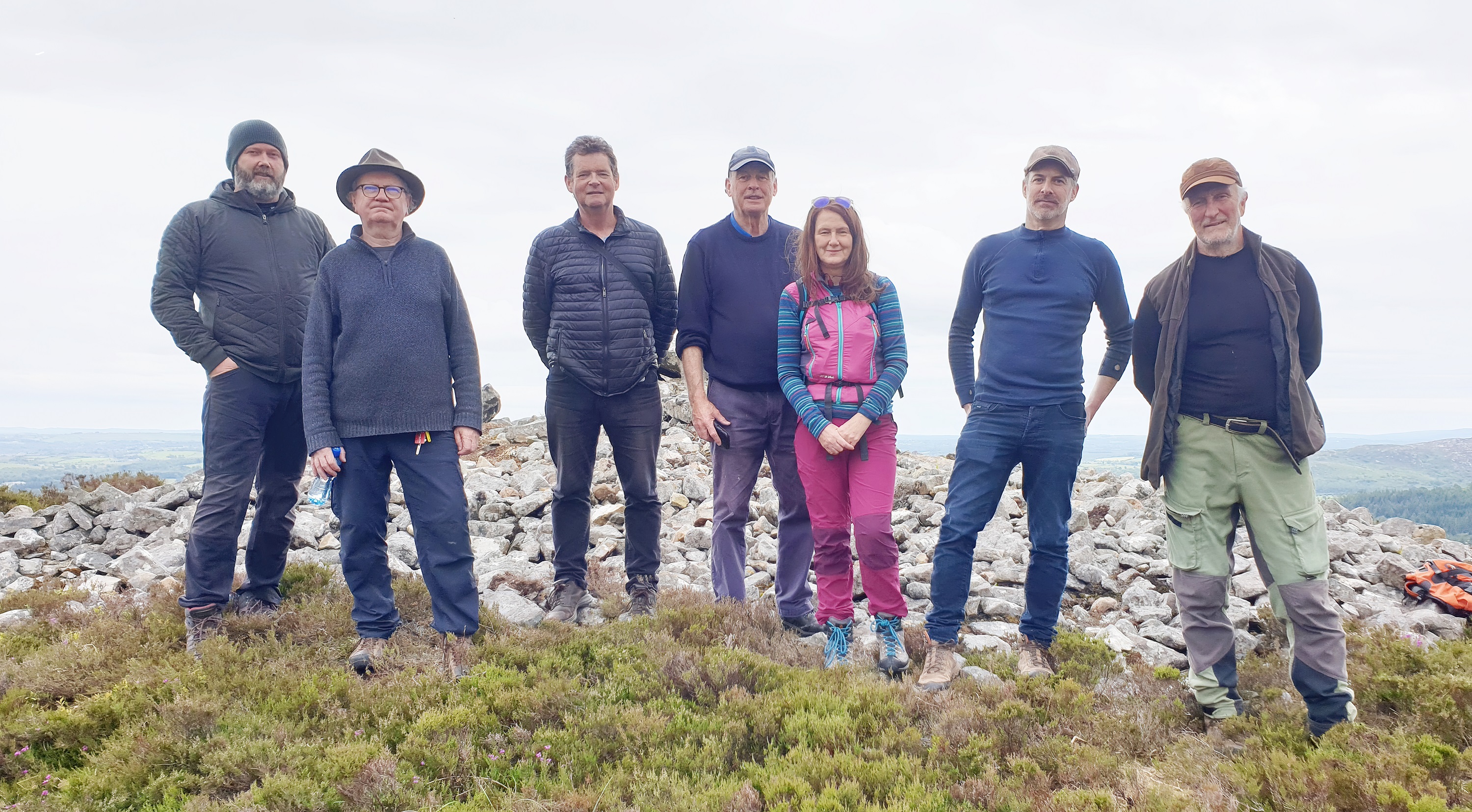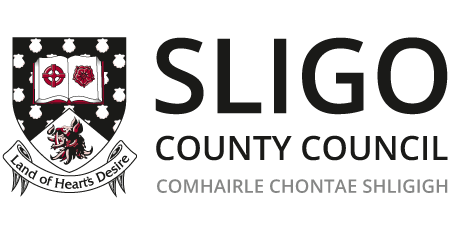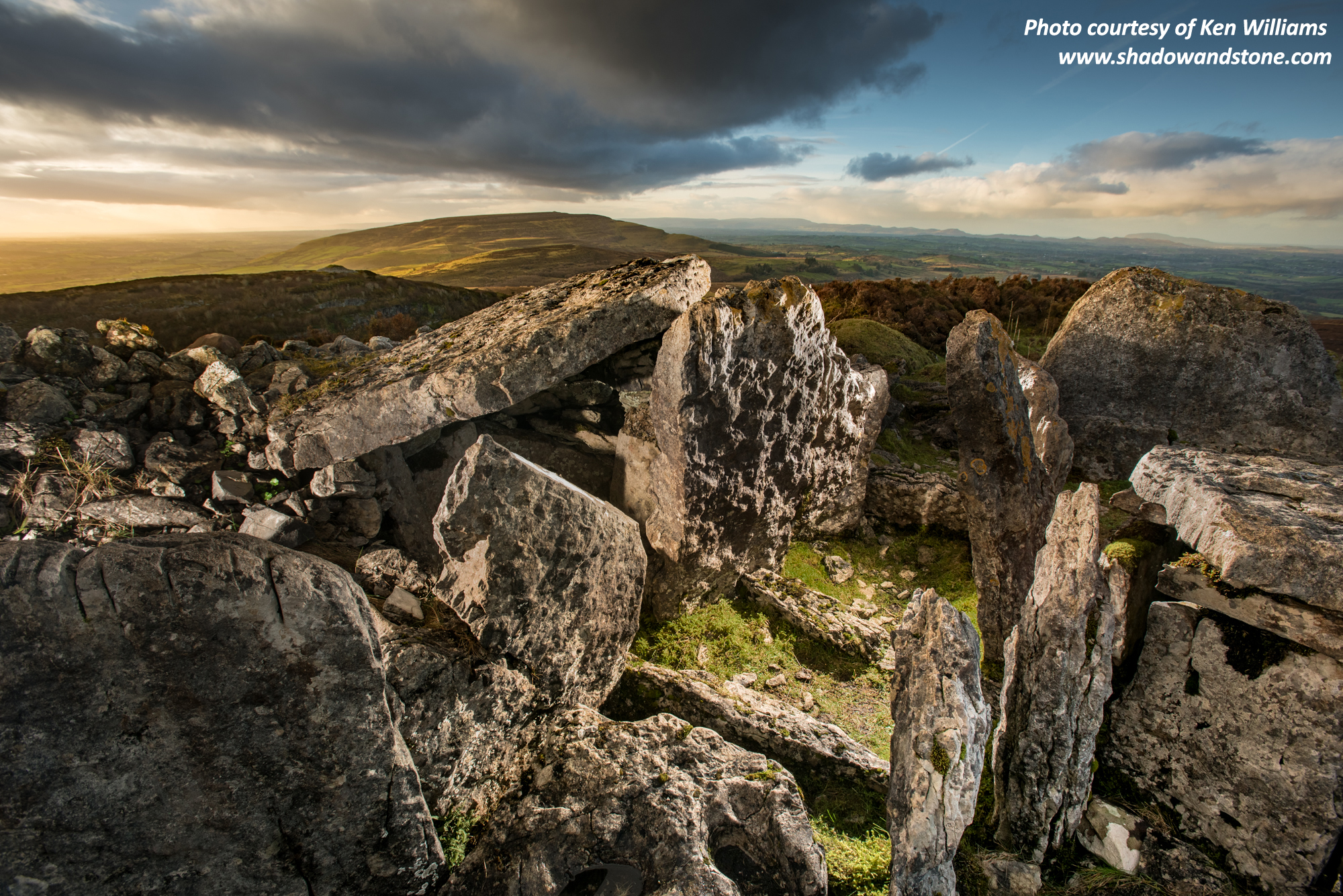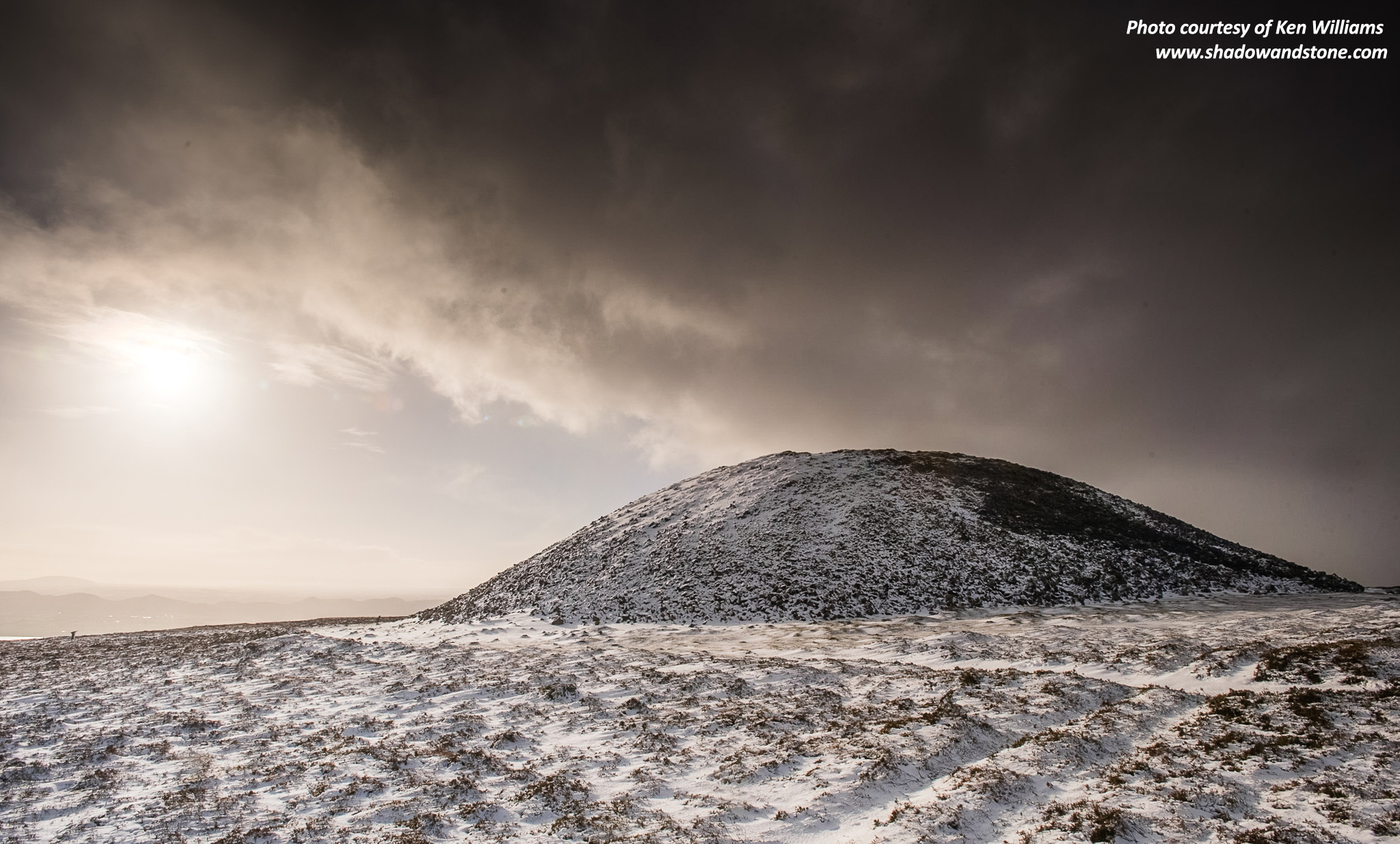Queens Maeve’s Cairn atop Knocknarea is an iconic landscape feature of County Sligo and forms part of Sligo’s Neolithic passage tomb tradition. Along with the megalithic cemeteries of Carrowmore and Carrowkeel, these monuments have few counterparts in the world, in terms of their number, quality of preservation and their striking landscape contexts.
UNESCO World Heritage Site
Bid for Sligo’s Passage Tomb Landscapes to be named UNESCO World Heritage Site
For many years concerns have been raised over increased visitor pressure and the deteriorating condition of these sites. Many of these world class monuments are under threat and require long-term management and conservation for the benefit of all and future generations. Engagement, consultation and partnership will be important in building support for a shared vision of how these sites can be sustainably managed into the future.
In January 2019, the Minister for Culture, Heritage and the Gaeltacht opened applications for Ireland’s Tentative List of properties for potential future nomination to the World Heritage List 2020-2030. The Department of Housing, Local Government and Heritage is currently seeking applications from Local Authorities for sites or properties which are considered to be of outstanding universal value (OUV), for inclusion on the new Tentative List. No site can be nominated for World Heritage status without first being placed on Ireland’s Tentative List. The Department is responsible for deciding which sites should be placed on the Tentative List and for submitting any eventual World Heritage nominations to UNESCO. The deadline for receipt of applications to Ireland’s Tentative List of World Heritage Sites is the 30th June 2021.
During 2020, the Sligo Neolithic Landscapes group (www.sligoneolithic.org) sought the support of Sligo County Council to prepare and submit an application to Ireland’s Tentative List for The Passage Tomb Landscapes of County Sligo. Sligo County Council is currently working with the Sligo Neolithic Landscapes group and other key stakeholders to submit an application by the end of June 2021.
 Sligo Neolithic Landscapes group
Sligo Neolithic Landscapes group
At Sligo County Council’s meeting on 1st February 2021, Cathaoirleach of Sligo County Council, Cllr. Dara Mulvey said that:
‘There is no doubt that Sligo’s Neolithic Landscapes are an exceptional heritage asset for the county and that they are unparalleled in world terms. Sligo County Council welcomes this community led initiative.’
Cllr. Dónal Gilroy, Chair of Sligo Heritage Forum added:
‘The partnership between Sligo County Council and the Sligo Neolithic Landscapes Group marks the beginning of a process that will see the future sustainable management of these monuments’.
If successful, the bid would begin building a process of communication and cooperation between all stakeholders with a shared interest in the sustainable management and promotion of Sligo’s Neolithic Landscapes. Attaining World Heritage Site status requires a sustained effort and common purpose by all key stakeholders over many years.
Dr Stefan Bergh, School of Geography, Archaeology and Irish Studies, NUI Galway, and member of the Sligo Neolithic Landscape group, has said:
‘The passage tombs of County Sligo and their careful landscape settings are an extraordinary example of Neolithic architecture and ritual, with few if any international counterparts. They represent one of the greatest achievements of Sligo people and fully deserve UNESCO World Heritage Site recognition.’
If a site is successful in being placed on Ireland’s Tentative List for World Heritage Sites, there is considerable work and time involved in the preparation of nomination documentation, which would include a management plan and a public consultation process. This stage of the process, together with the public consultation, takes at least two years. Thereafter the inscription process takes about a year and a half from the submission of the complete nomination document and management plan to consideration by the World Heritage Committee.
Photo courtesy of Ken Williams -
www.shadowandstone.com




